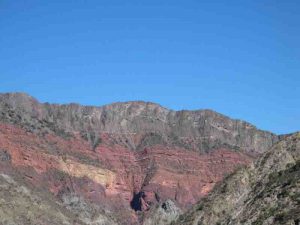
At the Triassic-Jurassic boundary, 200 million years ago, some 60% of species living on Earth disappeared. Scientists suspected that magmatic activity and the release of CO2 were responsible for this environmental disaster. To corroborate this, one would need to find and to precisely date traces of this activity and make sure that it coincides with this mass extinction. The precise determination of this timing has been achieved by scientists at the University of Geneva, and is published in Nature Communications.
Scientists have often linked the annihilation of life at the Triassic-Jurassic boundary with the emission of gas during the volcanic activity of the Central Atlantic Magmatic Province, a huge volcanic province that erupted around the same time. Geological studies, however, have questioned this hypothesis since the flood basalt eruptions from the igneous province are too young to be responsible for the mass extinction. The scientists, among them a team from UNIGE, therefore went to look for traces of magmatic activity that may be older, proving the role of magmatic activity in mass extinctions that hit the history of Earth during this period of time.
The geologists identified large areas covered by flood basalts assigned to the Central Atlantic Magmatic Province (CAMP), which extends over several million km2 from Northern to Southern America, and from Europe to Africa. They also discovered vertical fissures that extend over hundreds of kilometres and large intrusions. “We therefore erected the hypothesis that these fissures and intrusions are older or coeval to the mass extinction at the Triassic-Jurassic boundary, and we have verified this applying our high-precision dating techniques,” explains Joshua Davies, research fellow at the Department of Earth Sciences of the Faculty of Science at the University of Geneva (UNIGE).
The basalts enclose the mineral zircon in tiny quantities, which itself contains uranium. Uranium has the particularity of disintegrating itself over time into lead at a known rate. “It’s because of this, by measuring relative concentrations of uranium and lead, we can determine the age of crystallization of minerals in a rock to about 30’000 years, which is extremely precise for a period of time 200 million years ago,” adds Urs Schaltegger, professor at the Department of Earth Sciences of the Faculty of Science at the University of Geneva (UNIGE).
To carry out precise age determinations is a complicated exercise, only around four laboratories are capable of at this level of precision, among them the laboratory at UNIGE. The geologists were particularly interested to date basalts that can be found in the Amazonian sedimentary basin, an huge reservoir of coal and oil. And indeed, the results of their age determinations confirm that the age of these basalts correlates with the mass extinction at the Triassic-Jurassic boundary. This result allows the scientists to link this magmatic activity with the thermally induced release of immense volumes of CO2 originating from coal and hydrocarbons which likely caused the climate change the drove the disappearance of 60% of the species that were living at this time.
Reference:
J.H.F.L. Davies, A. Marzoli, H. Bertrand, N. Youbi, M. Ernesto, U. Schaltegger. End-Triassic mass extinction started by intrusive CAMP activity. Nature Communications, 2017; 8: 15596 DOI: 10.1038/ncomms15596
Note: The above post is reprinted from materials provided by Université de Genève.









